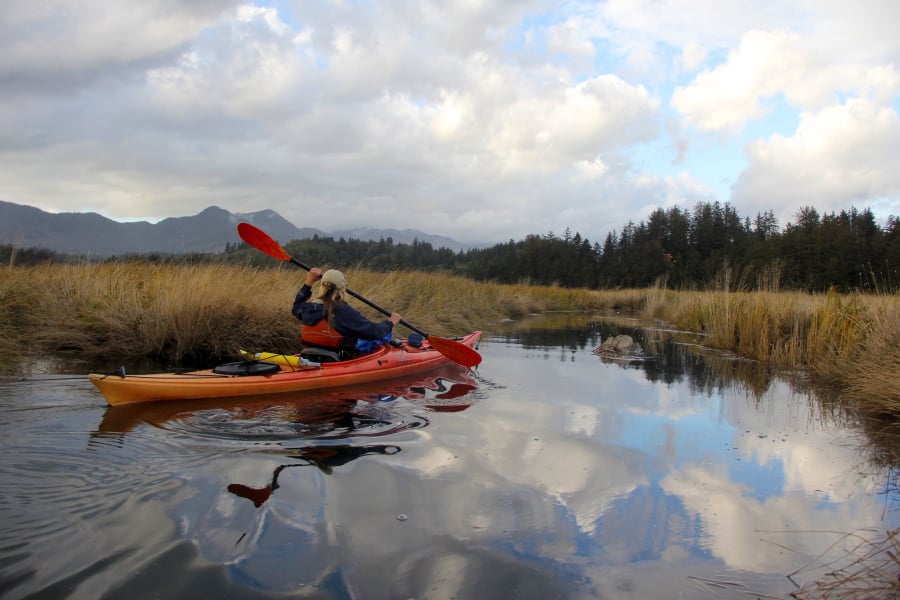SALEM, Ore. — From the bridge overlooking the lower Nehalem River, there’s little evidence to suggest that it’s an interesting place to explore in a kayak.
The river appears wide and slow, with houses lining the banks and occasional fishing boats motoring up and down the coastal stream.
But there’s far more to the Nehalem, especially if you paddle into the mudflats and estuaries hidden from view.
These rich pockets of the river, only accessible around high tide, are filled with marsh grass, birds and even swimming elk.
“I think being able to paddle into these wetland channels really makes it a unique, intimate experience,” said Ginnette Marberry, a guide with Kayak Tillamook, an outfitter based on the Oregon Coast.
I joined Marberry for a tour of the lower Nehalem last October, along with my 65- and 70-year-old parents. The trip, which begins just south of Manzanita, costs $65 per person and includes boats, PFDs and, if it’s cold, a mug of hot apple cider.
I was drawn to the trip because it offered something different than hiking and beach-combing during our stay at the Oregon Coast.
The off-season is a wonderful time to kayak in coastal rivers, even in the depths of winter.
“We actually have some pretty mild conditions in winter,” Marberry said. “I love paddling that time of year because I find it’s when I really need that push to get outside.”
Guided tour offers security
One of the reasons to go with a guided trip is the complexities of the tides. A higher tide is required to visit the Nehalem’s most interesting areas, but it also can make paddling a challenge if tides are going the wrong direction.
Our trip began in the afternoon, with the sun occasionally piercing through blue waves of coastal clouds that hugged the surrounding mountains.
We put boats in the water at Nehalem Bay County Boat Ramp, a large and easy access point. We paddled first down the big mainstem of the river, a major artery for Native American tribes who originally lived and paddled canoes here.
The Nehalem means “place where the people live,” according to Oregon Geographic Names, and this area was among the most densely populated tribal areas.
Later, the river became a thoroughfare for early Oregon’s timber, fishing and dairy industries. Evidence of old docks and jetties is easy to spot along the river, while more recent clear-cuts mark surrounding hillsides.
Soon, we turned off the mainstem and into the mudflats behind Lazarus Island, where Sitka spruce forest and marshland combined in shallow channels where we navigated.
This is the realm of birds — lots of them. We saw great blue herons and waterfowl, mostly.
Marberry said her favorite sight is white egrets because “these white birds with black legs and feet look almost tropical, yet here they are among the evergreen.”
Marberry also recalled watching a heard of elk swimming from the mainland to Lazarus Island, right in front of her.
“They jumped out of the water and shook off like a dog,” she said, laughing at the memory.
We spent much of the trip exploring the marshland before heading back to the mainstem and circling back to the boat ramp.
We took a quick detour to Bott’s Marsh, a marina in the 1800s that has almost completely reverted to nature.
The lower Nehalem River doesn’t look like much from the bridge on U.S. Highway 101, but with a paddle, it becomes a place rich in scenery and wildlife.



